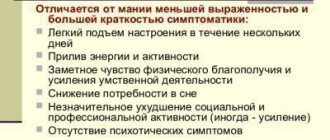Definition of a collective
From Latin collectivus is translated as “collective.” Therefore, we can say that a team is a certain group consisting of an N number of people united by common interests, ideas, tasks, and needs.
Any human activity requires participation in one community or another. Therefore, the concept of collective is defined not only by psychologists, but also by teachers. Opinions may differ somewhat, but the main essence is interpreted the same.
Concept in psychology
A group means a meeting, a crowd (gathering) of people, etc. For them to become a collective, there must be an organization present. If we “dig” deeper, then in psychology the definition of a collective is a community that carries out joint activities through interpersonal relationships, where the contribution of each individual is significant.
Teachers' opinion
Grouping of preschoolers, pupils, and students is classified as a group of pupils. Such communities are somewhat different from industrial ones. If a team in psychology is people united to jointly solve certain problems and perform specific functions, then in pedagogy the interpretation is slightly different.
Team of students
The co-presence of children in the group is an intermediate step that prepares for further activities. The goal of the workforce is to make a certain contribution to society. While the pedagogical group is engaged in the formation of an individual who should become useful to society.
Methods and stages of formation
In psychology, a team is always a group of people controlled by an organizer. As described above, Makarenko argued that any group goes through stages of formation. His methods are still used in different types of groups.
Communication
In order to establish internal connections in teams of any size, the manager has the responsibility to unite people. This is an important stage that will help avoid a tense situation and reduce the risk of conflicts. A close-knit team is more inclined to self-government, distribution of roles, and selection of a leader.
How to improve communication within a team:
- Joint events for unity, so that people maintain connections outside of work.
- Formation of a common goal.
- Encouraging group work.
Management
Psychological methods of team management include the following points:
- Belief implies argumentation and logical explanation. It is used to remove psychological barriers, eliminate conflicts, and set goals.
- Imitation. Makarenko also said that you need to show your personal successful example to the team members. People will follow such a leader; they will believe in achieving their goals. The behavior pattern of a leader or organizer becomes a source for imitation.
- Involvement. A psychological method that was also used by Makarenko. Each participant is involved in finding solutions, and leaders are jointly selected through voting or discussion. Each participant feels that their opinion is valuable.
- Inducement. A positive way of psychological influence. It was actively used in Soviet times. This may include such forms of encouragement as adding a participant to the Honor Board and presenting certificates. This increases the moral significance of the team member.
- Compulsion. A psychological negative technique that is used in critical situations when the inaction of a participant can lead to damage to the entire team. The participant is forced to perform certain work.
- Requirements. This method can only be used by an authoritative leader who is respected in the team. Otherwise, this method will not work.
- Praise. One of the methods of positive psychological influence. It encourages the participant to do an even better job, a very motivating method. The negative opposite way is condemnation.
The team, which is in its infancy, takes advice well. This is a psychological method when a more experienced participant, leader or manager recommends to an inexperienced comrade what to do in a situation. If advice comes in response to a request, it commands respect from an inexperienced participant. Unsolicited advice can hurt.
What is meant by an ideal team?
Social perception - what is it in psychology
Any association of people is a certain atmosphere of relationships, it is influenced by the human factor. One can only dream of an ideal team. You can really get closer to the standard if you follow these principles:
- people united in a group must have a joint significant goal aimed at the benefit of society and not contradicting state norms;
- each team member participating in joint activities is interested in a positive result and bears responsibility on an equal basis with everyone else;
- the specificity of relationships in the team is visible not only in working cohesion, but also in moral cohesion;
- one of the principles of the team is democracy; management bodies are an authority for subordinates, and at the same time, managers respect those who stand on the lower steps of the hierarchy, listening to their opinions.
Additional Information. Ideally, a team is highly organized, where such characteristics as mutual understanding, “a sense of community,” selfless relationships, and goodwill are manifested.
In a friendly team, there is a completely different attitude towards work and responsibilities. Members of an ideal community are able to intelligently combine public and personal interests without compromising production and family.
We are so different and yet we are together
Building healthy relationships at work isn't easy. This is due to the fact that each person is individual. There are several types of employees:
- Angry or grumpy. Unfriendly people who are always dissatisfied with something and easily lose their temper. For them, every word or reaction of others is an opportunity to throw out negativity. Such people have no desire to talk about good things.
- Envious people. The favorite pastime of such team members is spreading gossip, both at work and outside of it. They discuss everything from new lipstick to professional activities. These people are simply bored. When communicating with them, you need to avoid talking too openly about yourself and your family.
- Rigid colleagues. They don't like change. Even if the new one is many times better than the old one, they will not change anything. Relations with such employees should be based on strict adherence to established rules and instructions.
- Advisers. They constantly teach those around them, giving out advice left and right. They are harmless. The worst thing that their behavior leads to is a quarrel at work. When communicating with colleagues of this type, you need to take the initiative and ask for advice first.
- Pedants. React to the slightest inaccuracies and details. It is quite easy to moderate their ardor. It is enough to shift some of the responsibilities that require great attention and scrupulousness.
- Artists. They love to be the center of attention. Scandals at work are a way for them to recharge their energy. A couple of compliments and attention will turn them from enemies into allies.
These are just a few types of employees. In fact, there are many more of them. And if you can’t find a way to build relationships with them, you also need to pay attention to yourself. Perhaps the problem lies in your character and actions
The essence and development of the team according to A.S. Makarenko
Creative thinking - what is it in psychology
The described principles are perfectly projected onto the school, which serves as the foundation on which teams are formed, united by a common goal - study. In their activities, teachers are guided by the works of A.S. Makarenko, which describes the basic law of collective life.
An important point in the educational process is the goal (prospect). It can be close or distant, but it is completely understandable to every student. The essence of the perspective is to mobilize the strength of students to overcome difficulties in their studies.
The goal must correspond to the needs of the team, commensurate with its organization, level of development and experience. The constant change of perspectives determines the progression of the movement.
Traditions
When considering the psychology of a team, it is impossible to ignore this integral and important element of it. Any group of people develops their own traditions, which invariably grow stronger over time. This concept refers to certain forms of life activity of any group that reflect the interests, norms and desires of each of its participants.
Traditions are the source of new general rules, as well as empathy and mutual understanding between people. Moreover, they are large and small. The first of these two types of traditions are public events and events. When preparing and conducting them, people develop a sense of respect and common pride. Small traditions are, as a rule, daily. They allow you to develop discipline, observe norms, behavioral habits, and also teach all group members to maintain order.
Main criteria of the team
Personality development - what is it in psychology
To define what a team means, it is suggested that you familiarize yourself with the criteria for relationships.
Evaluation characteristics of a team
| Criterion | Description |
| Moral | It is based on norms and values based on universal morality |
| Responsibility | The team member is disciplined, conscientiously treats his duties and at the same time is ready to be responsible for the fate of each of his colleagues |
| Openness | Ability to build friendly relationships with members of your group and other teams |
| Collectivism | Caring for members of your group and resisting phenomena that destroy the team |
| Organization | Rational distribution of responsibilities between members, mutual assistance and replaceability, quick elimination of shortcomings that arise in the process of activity |
| Awareness | Understanding by each member of the goals, objectives, achieved results (intermediate and final) of joint work |
| Efficiency | Timely and high-quality completion of tasks |
The totality of all the described criteria is inherent only in an ideal community. In real life, such a model is difficult to find. Some groups are poorly developed and do not reach the level of the name “team” in terms of socio-psychological parameters. Others are conditionally assigned this concept, since they are in the process of development.
Relationships in a men's team: let's set priorities
In a male team, as well as in a female team, conflicts often occur. There are several ways to prevent them:
- Always look perfect. The best clothes for work are a formal business suit.
- Extra attention from colleagues or even flirtatiousness surprises and baffles. There is no need to be rude in response. It is better to remain silent or move the conversation to another topic.
- It is worth remembering that each member of the team is an employee like everyone else. Therefore, demanding special treatment for yourself is not nice.
- Do not react to provocations too emotionally. It is important to remain calm even in cases where emotions are brought out on purpose. This requires resilience.
The most important thing is to show respect to all colleagues at work without exception. We can say that this is the key to a good relationship.
Types of team
For group management to be successful, it is necessary to study all existing types of teams and their distinctive features.
Classification of groups
| Name | Peculiarities |
| By composition | |
| Homogeneous | The group contains people of the same gender, age or level of development. They develop common views and positions, but conflicts can often arise against the backdrop of internal competition |
| Dissimilar (heterogeneous) | Formed from members different in age, gender, status, profession, etc. Such a team solves complex problems with ease |
| By status | |
| Official | A legally formed team operating in the legal space |
| Unofficial | Activity is based only on the desire of people to cooperate with each other. Such organizations do not have a legal basis and are difficult to bind to social norms. |
| For internal communications | |
| Formal | The determining factor is the staffing schedule, which binds team members to certain work technologies, and material interest |
| Informal | In addition to public interests, people are united by emotional ties (sometimes friendship), which ensure communication within the work team |
| By degree of freedom | |
| Forced | An example of such a collective is a prison colony. Carrying out simple activities under strict direction is ineffective |
| Voluntary | Communities with civilian employees create an atmosphere of engagement. This has a positive effect on solving complex creative problems |
Collectives are also divided into small and large. Classification by size is carried out not depending on the staffing table, but on the basis of the possibility of establishing interpersonal relationships.
People united by common goals
Note! The smaller the number of people, the easier it is to turn a collective group into a well-oiled mechanism.
Small formations are called primary; they can be combined into a branched structure (for example, production workshops of a factory or classes in a school community).
Psychological theories and schools
Since A.S. Makarenko is considered one of four world-famous specialists who shaped pedagogical thinking back in the 20th century; his theory of teams is considered the most famous. The principles of Makarenko’s pedagogical approach are still partially used today.
His theory is applicable mainly to people with deviation, but it is also suitable for work groups.
According to Makarenko, not any group of people can become a team.
According to his theory, a community goes through stages that create a team:
- First comes the unity of people . The leader of this group of people, the chosen leader, is responsible for this stage. The group at the moment is only formal, people do not know each other, and cannot organize their activities. The task of the organizer (leader) is to unite people. They should have a common goal, motivation to work together, and similar interests. This technique is often used in educational institutions. For example, students enter the first year of university. Groups of people appear who know each other, and it is difficult for them to work in one place. Therefore, at the beginning of the school year, various hiking trips, competitions, and competitions are held. Their goal is to unite a group of people by forming a learning team.
- Leader nomination . Roles are being assigned in the team. Strong people appear ready to lead the crowd. They are chosen as leaders. They are the main source of communication between the leader and the rest of the team. The activist listens to the demands of the leader and conveys them to the team. Thus, the formation of self-government occurs.
- The Dawn of the Collective . The main goal of Makarenko’s educational method is the formation of self-government. At this stage, all roles in the team are distributed. A close-knit group of people has a common goal, so it is beneficial for them to do their job well. Each of the participants makes demands on the others and on themselves, but they are correct. More demands are placed on oneself. You can see that the team was formed according to certain characteristics: unity of opinions, everyone has the right to vote, common experience.
- Now education moves into the process of self-education . Making demands on yourself first becomes a habit. Fulfilling one's duties becomes an internal need for each team member.
According to Makarenko's theory, an important part of the collectivization of a group of people, in his case difficult teenagers, are traditions. Traditions are understood as sustainable forms of life of a group. With their help, relationships develop within a group of people and common interests emerge. The team becomes united. But traditions can transform and change over time, adapting to the collective.
Makarenko’s traditions include:
- Mass events, in preparation for which the team participates. The events evoke general pride and respect.
- Small traditions that are built into everyday life. They contribute to the development of discipline and daily routine. With their help, order is maintained and useful behavioral habits appear. This includes morning exercises for the entire team and joint breaks.
Makarenko believed that in order to unite people into a team, they need to form a common goal. He identified 3 types of goals - close, medium and distant.
What were they:
- A short-term perspective (goal) was set at any point in time, at any stage of the team’s development (stages above). The main thing is that every community member is interested in achieving this goal.
- The average perspective is suitable for teams at their dawn. A group project is selected that involves a common cause.
- Long-term perspective . This type is suitable for a fully established team with an established internal structure. For the work teams of difficult teenagers with whom Makarenko worked, such a goal could be successful education, choosing a professional path in a legal way.
Team life cycle
Regardless of the characteristics by which groups are classified, the stages of development of the team are identical, and the formation process is subject to certain laws. In this case, the composition may partially change, which introduces its own adjustments.
Note! No matter how good an organization is, it has its ups and downs. In other words, development occurs not according to ascending dynamics, but according to a sinusoid.
Stages of team formation
| Cycle stage | Peculiarities |
| Lapping | The stage of gradual acquaintance of team members, establishing personal and business relationships. It can be either short or long |
| "Palace Coups" | It manifests itself as a struggle for dominant positions in the team. In an informal group, a change in leadership is possible |
| Efficiency | A team that has successfully completed the previous stage has increased potential. Hidden resources and abilities of members work to increase productivity |
| Efficiency | The team, thanks to the experience gained and unity, successfully solves the assigned tasks. Each participant shows a creative approach to business |
| Mastery | This stage is characterized by strong ties between community members. People not only got used to each other and adapted to the conditions, but also learned to quickly resolve conflicts. Each team member is assessed on their merits |
| Aging | Having reached the highest degree of development, the team continues to exist “as usual”, successfully performing its functions. If work methods, structure, relationships no longer correspond to changed external conditions, the development of the team will decline |
| Death | There is no longer a need for the functions performed by a specific team, and it is disbanded. Or restructuring or reorganization occurs, as a result of which a new team is created |
At the stage of team formation
At the last stage, the efficiency is minimal. After the reorganization, most communities are revived, and the sine wave smoothly creeps upward. Members of disbanded enterprises join new groups at any stage of development.
The benefits of teamwork
- Working in a team, you can share your accumulated knowledge and skills, and in return gain new experience.
- A person can perform much more serious and large-scale tasks than he could do alone.
- You can receive some advice from your colleagues and feel their support. Often this applies not only to work activity, but also to everyday life.
- In a team, people learn responsibility. Moreover, here they can be responsible not only for their own work, but also for the work of their colleagues.
- A person can express himself creatively, learn to make general decisions, participate in various discussions and debates, and express his point of view.
- Each member of the team has the right to point out to others their mistakes and blame them if they do not adhere to moral standards.
Team and personality
In the stages of team formation there is a personal contribution of each of the participants. The opposite principle also applies - the group is a factor influencing the development of the individual. It all depends on what kind of relationship the subject has with the other members, as well as on his personal claims.
Models of personal development in a team
The line of behavior in a team is determined by the individual’s social experience, value orientation, manner of presenting oneself, and character traits. How well these factors fit with the rest of the members determines how the relationship will work out. There are 3 models:
- conformism, when a person submits to the principles of the group;
- harmony – the team and the individual have found the optimal level of communication;
- nonconformism - the individual tries to subjugate others.
Only the 2nd model is the development of the team and its members in increasing order. In the 1st option, the subject is suppressed as an individual. In the 3rd, he himself must be developed enough to painlessly subjugate the team.
Harmony in the team
"Palace Coups"
Once again the name speaks for itself. During this period, everyone has already gotten used to it and understands what can be expected from other participants, so the time comes when the active struggle for the place of leader intensifies. If there is already a leader in the team, then it is important for him to maintain his position, or if he feels weak, it is better to immediately give way to a stronger candidate. This is a rather difficult period in the life of any team, since separate groups can form here that will impose their opinions on others. There is a big risk that the team will simply fall apart.
Psychological climate
This term was first used by N. S. Mansurov, who studied psychology at work in the team of a manufacturing enterprise. This concept included the nature of emotions that arose in the relationships between employees, and was based on the coincidence of characters, inclinations, interests and sympathies.
In psychology, the psychological climate in a team is considered as a system consisting of three spheres:
- Social climate. In this case, we mean the group members’ awareness of tasks and goals while respecting their responsibilities and rights.
- Moral climate. This area represents the values that are accepted in the group, as well as their consistency, acceptance and unity.
- The actual psychological climate. It represents informal relationships between people in a team.
The psychology of climate in a team as a phenomenon has its own characteristics. It is created by the people themselves, who are able to influence it, changing and improving this category.
Structural components of team psychology
Shiriev Aydin Abuzar ogly,
dissertation candidate at the Department of Psychology, Baku State University.
Collective psychology as an integral socio-psychological formation is often captured in the concepts of “psychological, etc. The form of integrity of collective psychology is its structure, understood as unity and a certain ordered relationship of individual components. In joint activities, people inevitably come into contact and communicate. Contact communication is an integral element of the life of any primary group and its spiritual needs [1, p.154]. Here a direct exchange of views and ideas arises, various forms of relationships between people appear - likes, dislikes, etc.
Since the subject of our consideration is the relationship between military personnel, it should be taken into account that in their structure there are such areas as service, public, and everyday life, and each of them has its own system of interpersonal relations. It is known that service relations are a vital basis for the interaction of personnel in battle, in the service, and in everyday life [2, p. 84]. They imply strict fulfillment, first of all, of combat and other official, labor, and social duties and roles. These relationships are officially enshrined in the organizational structure of the military collective; they are specified and programmed in orders, regulations, rules, and manuals. The main efforts of commanders of all levels are directed towards their establishment and regulation. The system of official relationships is constantly being improved, since both in and outside of the service people interact with reason, feelings, and will, therefore, service and other objective relationships cannot be separated from the personal, just as personal relationships cannot be identified with non-service relationships.
Interpersonal relationships are one of the aspects of psychological relationships that have an extremely large influence on the behavior of military personnel. The system of such relations, due to its internal conditioning (sympathy, antipathy, indifference, friendship, hostility and other feelings between people in a team), sometimes develops spontaneously, it is less visible and is not organizationally formalized. Let us note that in the management system it is not always given due attention, although the system of interpersonal relationships is very, very significant and needs closer attention and systematic management [3, p. 136].
In the process of communication, various socio-psychological phenomena and processes arise and develop: mutual demands and suggestions, constant general mutual assessments occur. Empathy and sympathy, psychological rivalry and competition, imitation and self-affirmation, prestige - this is an incomplete list of them. All of them are stimuli for activity and behavior, mechanisms for self-development and personality formation. Let's look at some of them.
Thus, the role of imitation in the formation of personality is great. Imitation cannot be considered as a self-sufficient factor. In itself, its influence on the individual is neutral and depends on the conditions in which it is carried out, what ideals and role models are formed by society, the state, and the class in accordance with its economic, ideological, political, social needs, and professional goals. Along with these ideals, each social (national, age, professional) group creates its own role models. The military profession is especially rich in them. The importance of the ideal in the education of warriors cannot be overestimated. A.V. Suvorov also recommended to soldiers: “Take a hero as an example” [4, p. 236]. Given the leading dependence of role models on the general living conditions of society, class, social ideals, and values, imitation in its content largely depends on the microclimate. There are cases when within a particular group or collective there is an ideal that is far from the generally accepted one. The task of the officer-educator in this case is to discern in time the model that they are trying to imitate, to understand the reasons for the occurrence of such a phenomenon, the nature and degree of influence, and take the necessary measures depending on this.
Competition is very effective as a stimulator of personality activity. Social contact itself evokes a competitive spirit and a kind of increase in vital energy, increasing the individual capacity of individuals. It is useful for an educational officer to know and take into account the socio-psychological patterns of competition, to recognize the criteria by which people compete with each other, to control and direct this process.
Self-affirmation of an individual is his effective desire to take and maintain a certain position in the system of psychological relations in a team that would provide this individual with respect, recognition or trust, favor or support, help or protection. This would help satisfy the need for communication with other people, the manifestation of the individual’s individuality, and the disclosure of its strongest sides. Personal self-affirmation is an active process of a person realizing himself among other people, assessing his merits and advantages, comparing and contrasting himself with other people in order not to lose his individuality, discover opportunities, express himself, and play a significant role in the team. Self-affirmation is a multifaceted interaction mechanism, and therefore a very effective personality stimulant. We are talking here both about the desire to achieve an official social and professional position, and about the moral and psychological position, about the position in the system of interpersonal relations.
Self-affirmation arises on the basis of the individual’s need for communication with others, for self-knowledge; at the same time, it is one of the psychological levers for self-improvement and personal development. In connection with the self-affirmation of an individual among his own kind, many different situations can arise that affect not only one individual, but also the team as a whole, its cohesion and performance. In the process of self-affirmation in a team, for example, sometimes small, so-called unofficial groups can spontaneously form. Working with them is the task of management. Ignorance by the officer-manager of the laws of self-affirmation of the individual in the team leads, as a rule, to mistakes and shortcomings in working with people.
The system of real life relationships in a team is for each individual an element of the immediate social environment in which his consciousness develops. And the long-term existence of a certain way of relationships between a person and the people around him forms certain traits of his character. Relationships in a military team play a big role in its unity, organization, increasing combat readiness, and strengthening discipline [5, p. 149].
Taking into account the very significant role that relationships play in the education of soldiers, in the development of their psyche and consciousness, general military regulations pay great attention to this. Suffice it to say that the Internal Service Charter begins with the chapter “Military personnel and relationships between them.” Every military collective influences each individual, primarily by presenting certain demands to him, constant monitoring and evaluation of his actions and behavior. A big role in this belongs to collective opinion, which, acting in the form of evaluation, praise, approval, blame, condemnation, etc., controls and corrects the actions and behavior of people in accordance with the requirements of the collective. Researchers distinguish four forms of manifestation of collective opinion:
1. Collective opinion
- one of the components of the moral and psychological climate of the primary military group of the unit. However, it should be borne in mind that collective opinion can have not only a positive, but also a negative impact on an individual.
Military regulations emphasize that in the interests of increasing combat readiness and strengthening organization and order in military teams, officer-leaders must make full use of the power of the public and create an atmosphere of intolerant attitude towards violators of military discipline. From here it is clear that every officer-manager, as the leader of a team, must constantly form the public opinion of the team, increase its ideological content in every possible way, avoid duality, and strive to make it unified [6, p. 234].
2. Collective (group) moods
– the most important component of the psychology of the team. How joint experiences of certain events, facts, and collective moods strengthen the feelings of individual people. Therefore, the practical significance of collective sentiment is great. They influence behavior and activity, and the performance of people [6, p. 423]. At the same time, some moods (enthusiasm, faith in common success, passion, elation, a state of general uplift) contribute to the success of the team. Others (state of decline, lack of self-confidence, despondency, boredom, resentment or dissatisfaction), on the contrary, sharply reduce the capabilities of the team.
Collective sentiments have a strong influence on soldiers and are reflected in the level of discipline and organization of small military groups and in the efficiency of their work. The officer-educator must always take this into account in his work and, relying on the asset, fight for the good mood of the team.
3. Collective traditions
– a significant element of the moral and psychological climate of the team. According to the apt remark of A. S. Makarenko, “traditions are the social glue for a team that holds it together into a single whole, and at the same time gives it originality and uniqueness” [8, p. 127]. The role of traditions in the upbringing of the individual in a team is great, for a person acquires habits and everyday ideas about social existence, characteristic of his social environment, naturally and unnoticed by himself.
4. Managing collective discipline.
The success of using collective weapons and the reliable execution of a combat mission depend on the consciousness and impeccable discipline of each soldier included in the combat crew, crew, and duty shift. Therefore, the number one problem in military teams is strengthening discipline, increasing organization, personal and collective responsibility of military personnel for improving combat readiness [9, p. 160]. Military groups, as a rule, are distinguished by the highest degree of organization and discipline, mutual exactingness, integrity, mutual responsibility and mutual assistance, military camaraderie and brotherhood in relations, internal cohesion, mobility, constant internal readiness for self-sacrifice in the name of the interests of the Motherland.
Discipline - includes such qualities as diligence, accuracy, etc. It should manifest itself in a soldier constantly and become a habit. Therefore, the officer-educator must take the necessary measures to develop the warrior’s personality as a whole, providing her with maximum conditions for acquiring positive habits and behavioral patterns.
5. Preventing and overcoming conflicts
. Any conflict disrupts the normal course of life of the military collective. That is why it is very important to be able to prevent them, and if they do arise, then quickly and effectively resolve them, while trying to direct their energy towards team unity. A comprehensive analysis of conflicts and conflict situations ensures their timely prevention and prompt elimination, and at the same time helps to improve the moral education of personnel.
As we see, the main components of team psychology are very complex and include a large number of elements. Each structural component is unique. It has its own characteristics. Therefore, given the general structure, the psychology of each specific team is unique and unique. With their content, the structural components nourish and fill the psychology of the collective as a whole, and determine its “individual psychological” characteristics.
Thus, analysis and management of collective opinion and mood, the ability to create unity of thoughts and feelings in a unit, prevent conflicts and eliminate emotional contradictions, form collective demands and discipline, develop progressive traditions - these are the areas that contribute to the unity of personnel and increase combat readiness divisions.
Literature
1. Shikharev P.N. Modern social psychology: Textbook for universities. St. Petersburg: Rech, 2002.
2. Discipline. Team. Combat readiness: Methodological manual. / Ed. I.G. Pozdnyakova. M.: Institute of Military History, 1989.
3. Culture of relationships between military personnel: Educational and methodological manual. / Ed. N.F. Karaseva. M.: Voenizdat, 1990.
4. Shapar V.B. Psychology of wars and conflicts. Rostov, Phoenix, 2005.
5. Ageev V.S. Intergroup interaction: socio-psychological problems. M.: MSU, 1990.
6. Military psychology: Textbook for military schools / Ed. V.V. Shelyaga, A.D. Glotochkina, K.K. Platonova. M.: Voenizdat, 1972.
7. Asmolov A.G. Psychology of Personality. M.: Academy, 2007.
8. Makarenko A.S. Soch., vol. V. M.: Nauka, 1977.
9. Malopurin I.I. Psychological foundations of training for Ground Forces soldiers. M.: Voenizdat, 1983.
Received by the editor on January 14, 2010.
Building relationships
The creation of a team in social psychology is considered through the passage of five stages. Each of them serves to establish relationships between its participants:
- Lapping. At this stage, people mask their true desires and feelings. They try to assess each person's interest in the common cause.
- Close combat. At this stage, each member of the team begins to show his individuality and characteristics, claiming one or another role. In this case, the existing contradictions become obvious, which the participants are trying to balance in one way or another.
- Experiments and improvement. At this stage, all team members begin to pursue common goals rather than personal ones. They assess the potential of the team, as well as opportunities to improve its work.
- Efficiency. Having moved to this stage, each person begins to feel proud of being a member of the team. Each employee overcomes all difficulties that arise using their creative potential.
- Maturity. At this stage, all conflicts between employees are resolved in a calm atmosphere. The goals of each team member coincide with the goals of the organization.










